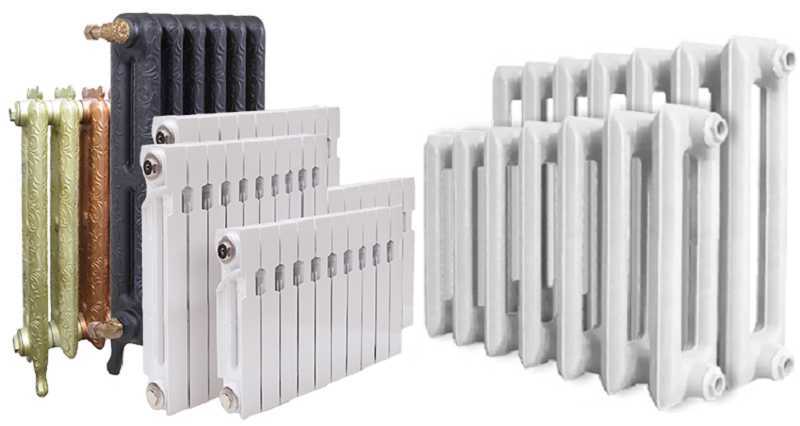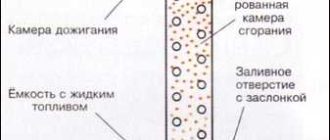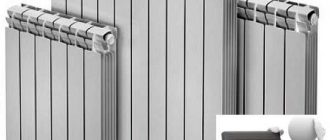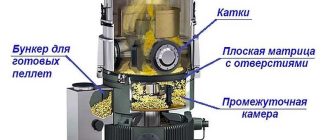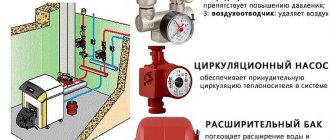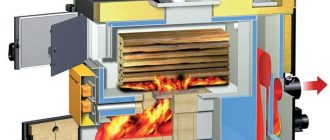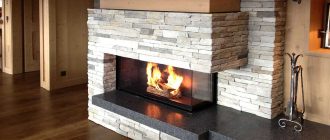When building or renovating a heating system, radiators are most often replaced. Some of them have already worn out so much that they simply cannot work any more, others are simply boring. In any case, the question arises: “Which radiators are better?”. After all, you want them to be beautiful and efficient. Appearance of heating devices is certainly important, but the choice of heating radiators should begin with the selection of the technical characteristics of your heating system. After all, first of all it is part of the engineering system, and the working pressure, maximum temperature of the coolant or its composition is much more important than shape and color. And after determining the type of suitable batteries, you can be engaged in the selection of the model in terms of aesthetics, but again, you will have to keep in mind another technical parameter – the thermal capacity of the section of the radiator or the whole battery. So, it is not an easy task – the choice of heating radiators.
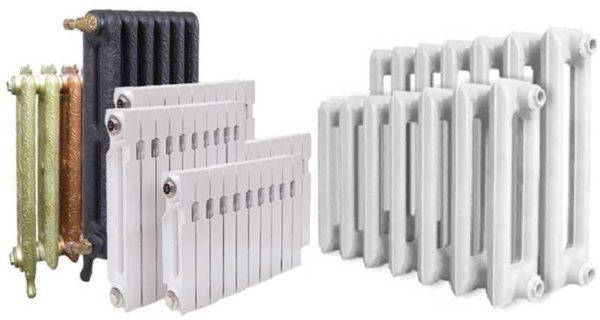
The choice of heating radiators today is huge. There are six large groups, differing in structure and/or material:
- cast iron;
- steel (tubular and panel)
- aluminum (cast and extrusion);
- bimetallic (full and partial bimetal);
- convectors (floor, wall, in-floor);
- baseboard heating.
Radiators are different in appearance and characteristics, but the ideal and universal heating device has not yet been invented. Each has advantages and disadvantages, and it is possible to say exactly what radiators are better only in relation to each specific case. In order for you to be able to make a reasonable choice, you need to know about the pros and cons of each group.
Vsebina članka
Cast iron radiators
The oldest of the heating devices. They are characterized by high reliability, long service life, calmly tolerate overheating of the coolant (up to +135°C), and react normally to water hammer. All because of the fact that they have thick walls. But the large thickness of metal is not only pluses, there are also minuses. The first is a large mass. Not all modern building materials can withstand the weight of cast iron. Let today they are far from being as heavy as in the days of the USSR, but still much more massive than all the others. A large mass also means difficulties in transportation and installation. Firstly, powerful hooks are required, and secondly, it is desirable to mount them with two people – the weight of a radiator with 6-7 sections is 60-80 kg. But this is not all. Large mass of metal is a high heat capacity and significant inertia. On the one hand it is a disadvantage – until the batteries are heated, the room will be cold, but on the other hand – a plus, because they and cool down will be long. There is another disadvantage of high inertia – cast iron batteries are ineffective in systems with thermostats. All this together and leads to the fact that put cast iron radiators heating today is not so often.
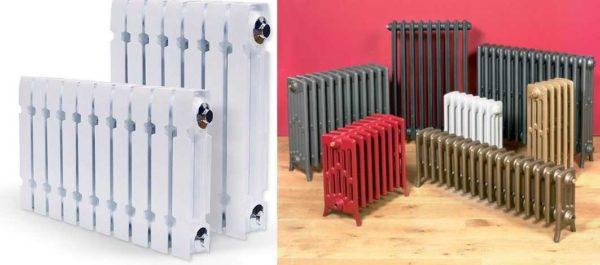
But they have their own area of application – high-rise apartment buildings. If the storey is higher than 16, in such systems creates high pressure, which is able to withstand only cast iron and some types of bimetallic radiators (full bimetal). Even their properties are optimal in heating systems of private houses and cottages with conventional solid fuel boilers without automation. These boilers have a cyclic principle of operation, then heating the coolant to the boiling point or even higher, then cooling down. Cast iron reacts normally to high temperatures, and also due to inertia smooths out temperature fluctuations.
Until recently, cast iron radiators had an unattractive appearance – the well-known and long-abandoned “accordion”. Today, there are models that look like aluminum or bimetallic – with smooth face edges, painted with powder enamel (most often – white). There are many designer models, mostly on legs, decorated with cast ornaments. This option in general there is only in cast iron, all the others have mainly a more austere, ascetic design.
Aluminij
Aluminum heating radiators are made not from pure aluminum, but from an alloy on its basis. This metal is not chosen by chance, as it has one of the highest heat transfer coefficients – 4-4.5 times better than cast iron and 5 times better than steel.
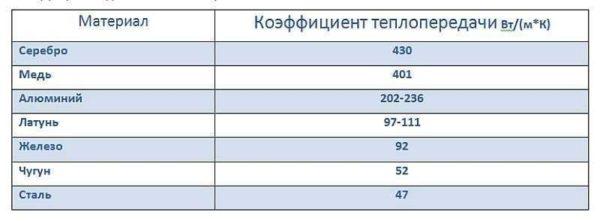
That is why aluminum radiators are distinguished by high power (180-190 W per one section), no less high heating speed and low inertia. It is they work very effectively in conjunction with thermoregulators, allow you to maintain a stable temperature with an accuracy of one degree. To the pluses of aluminum radiators can be attributed their low weight (one section weighs 1.5-2 kilograms), which facilitates delivery and installation. Another positive point – the shape is designed so that it has a large cross-section of channels for the coolant (a little less than the cast iron “accordion”). This is good, as there is a low probability that these channels will get clogged and the radiator will stop heating.
Now about the disadvantages of aluminum radiators. They are related to the properties of aluminum. As you know, it is a chemically active metal. It actively interacts with most of the chemical table, and especially reacts violently with copper. And in modern heating systems copper parts are often found. This neighborhood threatens the rapid output of copper parts of the system and failure, as well as increased gas formation. With the gases learned to fight – put in the systems of automatic gas vents (valves), and copper is saved by not putting it close to aluminum devices. Of course, the process is still going on, but not with such intensity.
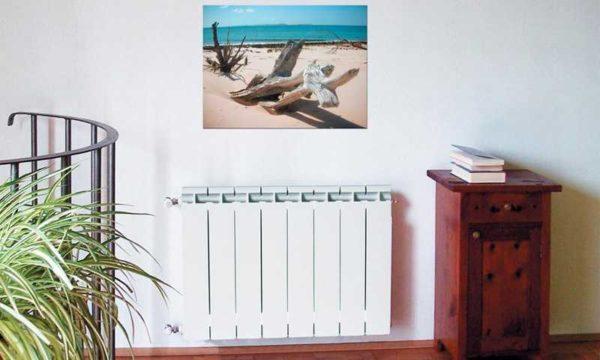
The chemical activity of aluminum is also manifested in the demanding quality of the coolant. Not in the sense of its clogging, but in the sense of its acidity. Normal work aluminum radiators in systems with the acidity of the coolant is not higher than 7 (Ph 7).
Not very good for the operation of the heating system and softness of aluminum. In the alloy from which the radiators are made, there are additives that increase its hardness, but, all the same, in networks with high pressure they do not work. The usual working pressure is 8-16 Atm, depending on the type and manufacturer.
Based on all of the above, the area in which aluminum radiators will be the best is drawn out. These are individual heating systems with boilers controlled by automation. Not bad they feel themselves and in apartments, but only in buildings with small floors (up to 10 floors), which circulates coolant with Ph 7-8.
Bimetallic radiators
To correct the shortcomings of aluminum radiators were invented bimetallic. Inside the aluminum jacket sealed stainless tubes. Stainless steel is known to be chemically neutral and very strong. Thus, two problems are solved at once. But the cost of bimetallic radiators becomes much higher – the manufacturing technology is more complicated, and even a little lower is the heat output. On average, the heat output of one section of bimetallic radiators of standard size is 170-180 W. Another plus is the higher operating pressure with which these radiators can work. On average, it is 20-30 Atm, which is more than enough even for high-rise buildings.
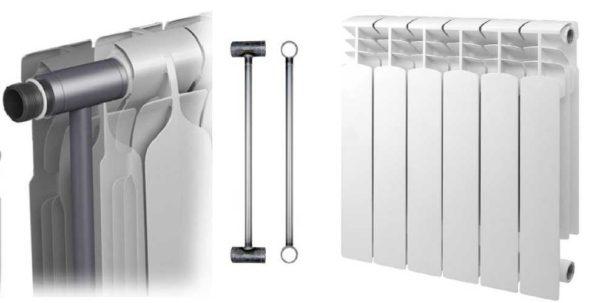
At the same time, another problem is added – the cross-section of the channels for the coolant in bimetallic radiators is much smaller than in aluminum. Therefore, before the radiator, it is desirable to install filters. Minuses, as you can see, not so much, but there are nuances. There are simply two types of bimetallic radiators: full and partial bimetal. At the full bimetal all the collectors (channels through which the coolant moves) are made of stainless steel. If you decide which bimetallic radiators are better, it is the full bimetal. In partially bimetallic radiators from stainless steel made only vertical collectors, and horizontal – from aluminum. That is, such products have a slightly lower chemical activity, but still at a fairly high level and the working pressure is much lower.
Now heating systems, for which bimetallic radiators – the best. These are multi-storey buildings with any type of coolant (including very acidic or alkaline). In individual heating systems, their properties will be unclaimed, so you should not overpay.
Steel radiators – panel radiators and tubular radiators
There are two different types of steel radiators, with different characteristics and very different in appearance. These are tubular and panel radiators. One is made from steel tubes, the other from steel sheets. Both have a relatively low price, which is what attracts them. But steel in heating systems “lives” not very long, so it is also the most short-lived heating devices. Of course, there are exceptions – some manufacturers cover pipes or sheets with a protective layer, so that the warranty period of operation is counted as a decade or even more. But the price of such steel radiators is not small either.
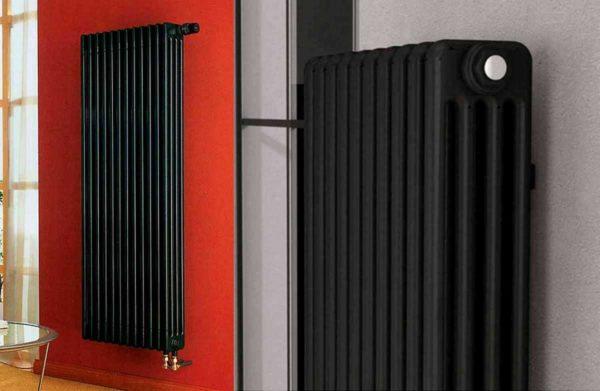
Of the other characteristics – a small thermal inertia, demanding to the coolant. Moreover, and the acidity, and the presence of foreign particles. Particularly demanding panel models – they are molded thin channels through which the coolant moves. They are even thinner than bimetallic, so filters at the entrance are strictly mandatory. If we talk about the acidity of the coolant, the highest value at which steel radiators work is Ph8. The working pressure is about 10-16 Atm.
With the capacity of the spread is very large. The design of both panel and tubular radiators is such that they can be of different sizes. Panel radiators with height from 30 cm to 90 cm and length from 40 cm to 3 m are produced in series. There are special models stretched in height. Their maximum height is 2.7 meters (on special order can be made and higher, but there will be problems with transportation).
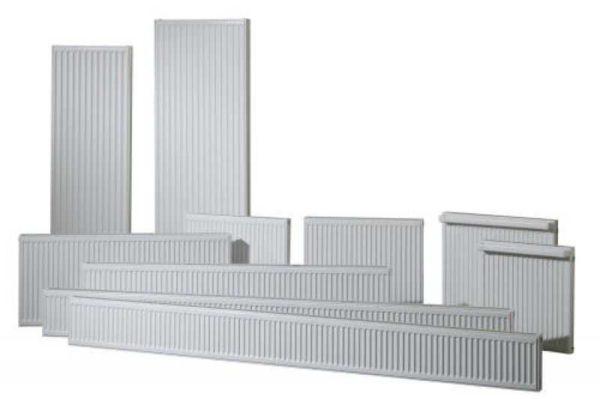
The spread in the size of tubular radiators is even greater. They can be height from 19 cm to 3 m, width from 10 cm (two sections) to 3 meters, depth from 6 cm to 21 cm. The power of these radiators depends not only on the number of sections, but also on the number of columns (pipes in one row). There can be from two to six columns. Two to three columns can be hung on the wall, wider ones are more often put on the floor. Unlike all others, the sections of tubular radiators are not detachable, i.e. they cannot be added or reduced. They are welded together. On the one hand – less leaks, but on the other hand – less mobility. But it is compensated by their high plasticity – tubular steel radiators can be curved – even around the columns of their install or wrap large containers with plants (there is a minimum radius of bending). There are, by the way, models in the form of benches or tables.
Konvektorji
Recently, floor-to-ceiling glazing is becoming more and more popular. Really beautiful, but here is how to be with heating….question. It is possible to put low radiators on legs, but the whole chic then smeared. That’s when they use in-floor convectors. Under them in the floor make a niche and the device itself is installed in the floor, closing it with a grid. To increase heat output (necessary for the period of cold weather), fans are built inside. The solution is aesthetic, but such systems cost a lot. There is another nuance – fans, even the quietest, are noisy. Some people are not bothered by this noise, while some people are very much disturbed by it. In any case, there are more and less noisy models.
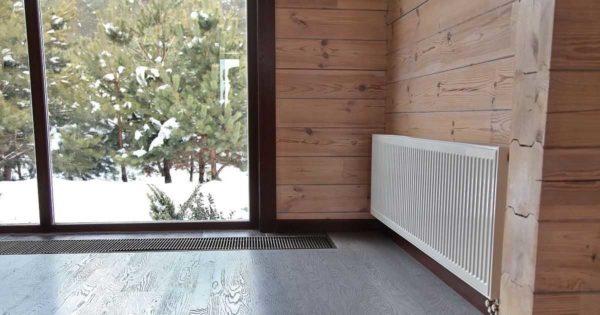
So, if you need to heat a floor-to-ceiling French window, the best option is an in-floor convector.
Baseboard heating
In shape, baseboard heating resembles old-style plate radiators – it’s two pipes with lots of thin plates. The difference is that these thin pipes, usually copper, are so small in height and width that they are hidden behind a high skirting board of a special shape (open from above). Due to the high heat transfer coefficient of copper, the power of these small radiators is high, it is gained due to the length – even along the entire perimeter of the room.
In addition to invisibility there is another advantage of baseboard heating – most of the heat is transferred not by convection, but in the infrared range – from the heated walls. A stream of warm air rises along the walls, warming them. As the walls heat up, they begin to radiate heat, which our bodies perceive as more comfortable. Minuses of this system
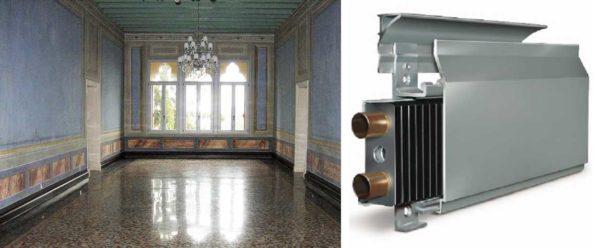
The disadvantages of baseboard heating – demanding to the heat carrier and thermal regime (it is impossible to overheat), low working pressure (up to 10 Atm). All this suggests that such systems can work only in individual heating, and with boilers controlled by automation.
What heating radiators are better for apartments and houses
Now a little systematize all the information from another point of view – what is better to choose batteries in an apartment, and what for a private house or cottage. First let’s talk about what you can put in apartments. To choose everything correctly, you first need to visit the housing and maintenance office or talk to plumbers. You need to know what pressure in your heating system and what is the acidity of the coolant and its operating temperature (at least according to the documents). It would be nice to know what temperature and pressure spikes occur. Armed with these figures you will need to choose a specific model of those types of radiators that are suitable for your situation.
Now about what radiators are better for the apartment. Here are the options:
Once again we draw your attention that selecting a particular model, you should definitely look at the technical parameters. Only in this case, radiators will work for a long time without repair and replacement.
Now about what radiators are better for a private house and cottage. These systems have a small volume, differ in that in them the state of the coolant you control yourself, you can adjust the acidity, clean the filters. So that the selection of acidity in this situation is not relevant. What you need to consider is the type of boiler. If the system is a solid fuel boiler and there is no heat accumulator in it, smoothing out temperature fluctuations, the best choice will be cast iron batteries. They will both withstand overheating and smooth out temperature fluctuations with their thermal inertia.
In all other cases, the best choice is aluminum radiators. They have low inertia and react quickly to temperature changes. They heat up literally in minutes, and from them there is a tangible flow of heat. However, they also quickly cool down, so that in case of an emergency stop the house will be cold quickly.
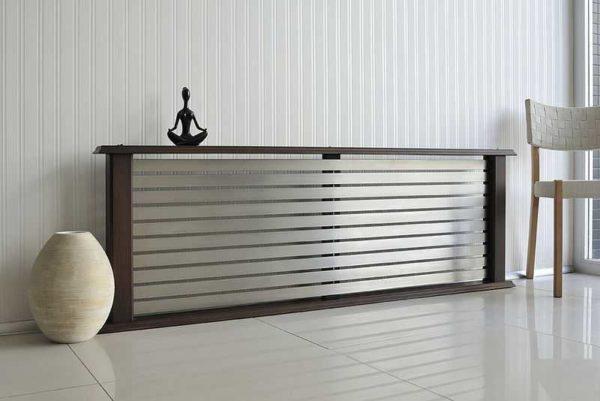
Not bad will be and steel radiators. This is an economical option, but they even in normal operation do not last long – a small service life. For aesthetes, a variant with plinth or convector (embedded in the floor) heating is suitable. Both systems work perfectly with any automated boiler.

